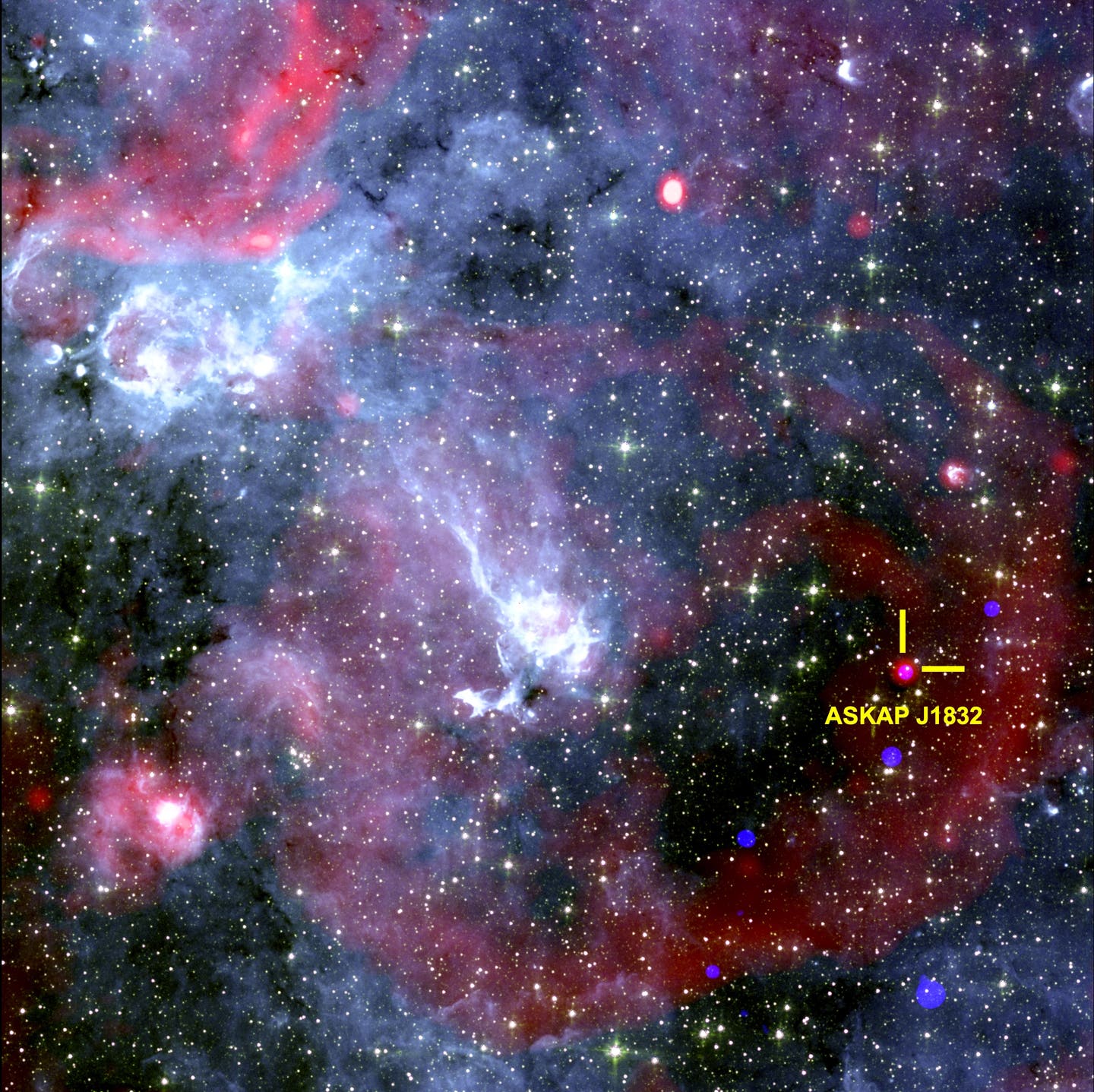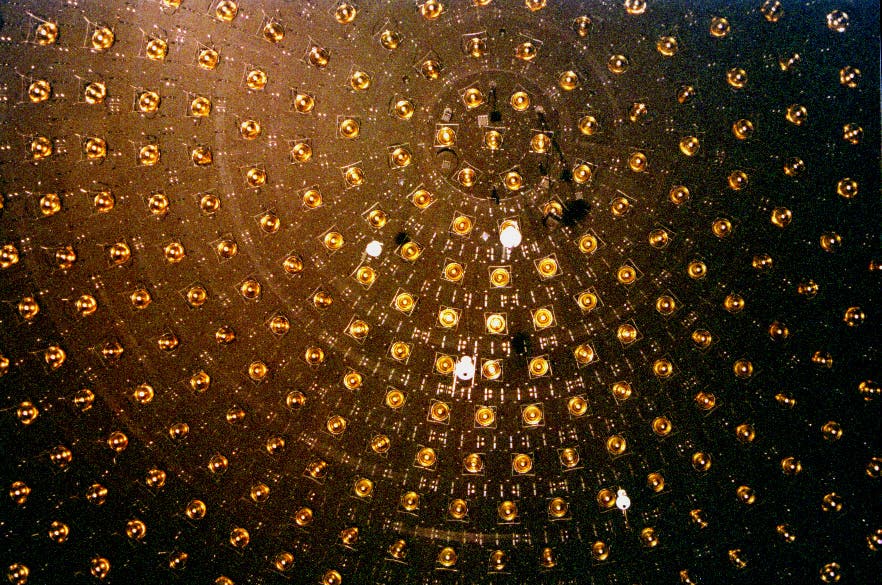Scientists discover mysterious new cosmic object in the Milky Way
Astronomers discovered a mysterious Milky Way object emitting radio and X-ray pulses, baffling scientists and pointing to new stellar physics.

An image of the sky showing the region around ASKAP J1832-0911. (CREDIT: Ziteng (Andy) Wang, ICRAR)
In an unprecedented discovery, astronomers have identified a strange object in the Milky Way galaxy. This celestial body, about 15,000 light-years away, emits bursts of radio waves and X-rays every 44 minutes. This behavior challenges existing theories and could reshape our understanding of cosmic phenomena.
A Surprising Cosmic Discovery
A global team of astronomers, led by Ziteng "Andy" Wang from Curtin University and the International Centre for Radio Astronomy Research (ICRAR), first spotted the unusual object, named ASKAP J1832-0911, using Australia's ASKAP radio telescope. Unexpectedly, NASA's Chandra X-ray Observatory simultaneously detected X-ray emissions from the same region.
“Discovering that ASKAP J1832-0911 was emitting X-rays felt like finding a needle in a haystack,” Wang said. “ASKAP covers a wide area of sky, but Chandra only views a tiny fraction. We were incredibly lucky they overlapped.”
Previously discovered objects of this type, called long-period radio transients (LPTs), were known to produce only radio signals. ASKAP J1832-0911 is the first LPT observed emitting both radio and X-rays, revealing that such objects are significantly more energetic than scientists thought.
Strange Signals from Space
LPTs emit radio pulses lasting much longer than those from typical pulsars. ASKAP J1832-0911's bursts, lasting around two minutes, occur every 44.2 minutes. Radio measurements showed an extraordinarily bright peak signal strength of nearly 1,870 millijanskys, with high polarization levels—clear indicators of a compact and highly magnetized source.
Observations from ASKAP's advanced signal processor also captured brief fluctuations lasting just half a second. This means the source must be incredibly small, likely smaller than 150,000 kilometers, roughly Earth's size. Such compactness points toward a neutron star, a white dwarf, or potentially even a black hole.
Related Stories
Further analysis revealed a distance of roughly 15,000 light-years from Earth. Yet despite extensive studies, astronomers remain uncertain whether ASKAP J1832-0911 is connected to a nearby supernova remnant or entirely separate.
Mysteries in Magnetism and Stellar Evolution
Researchers like NASA’s Zorawar Wadiasingh, from the University of Maryland, proposed earlier theories about extreme neutron stars called magnetars. Magnetars have powerful magnetic fields and occasionally emit X-rays alongside radio waves. However, ASKAP J1832-0911's features stretch even magnetar models to their limits.
“ASKAP J1832-0911 could indeed be a magnetar, or it might be a highly magnetized white dwarf in a binary star system,” Wang explained. “However, these possibilities don’t fully explain our observations. This discovery hints at new physics or entirely new models of stellar evolution.”
Until now, astronomers had not observed X-rays coming from any LPTs. This discovery significantly expands the potential energy range for these mysterious objects, highlighting how much remains unknown about their origins and behaviors.
Next Steps: Future Telescopes and Technologies
The team emphasized the crucial role modern telescope technology played in this breakthrough. Wadiasingh noted, "These objects are extremely bright and should have been found decades ago. Only now, with advanced telescopes and computational tools, are we uncovering them."
Upcoming space missions, such as NASA's proposed Advanced X-ray Imaging Satellite (AXIS), could significantly enhance our understanding. AXIS, if approved, would provide ten times Chandra’s sensitivity, vastly improving astronomers' ability to observe similar objects.
"AXIS could follow up on these radio discoveries better than Chandra due to greater sensitivity and a wider field of view," Wadiasingh said. "By decade's end, astronomers may discover dozens, perhaps even hundreds, of these sources."
Uncovering New Physics
ASKAP J1832-0911’s month-long hyperactive period, where X-rays were noticeable, suggests these events are episodic and may often go undetected. If true, numerous similar objects might populate our galaxy unnoticed, waiting for astronomers to find them.
Wang highlighted the significance of their findings: "While our discovery deepens the mystery, it also brings us closer to understanding. Either we've found something entirely new, or we're witnessing known cosmic objects behaving in unprecedented ways."
With each observation, scientists gather clues about ASKAP J1832-0911, potentially unlocking secrets of the universe and challenging fundamental theories in astrophysics. Only continued observation and more powerful telescopes will resolve these mysteries.
Research findings are available online in the journal Nature.
Note: The article above provided above by The Brighter Side of News.
Like these kind of feel good stories? Get The Brighter Side of News' newsletter.



